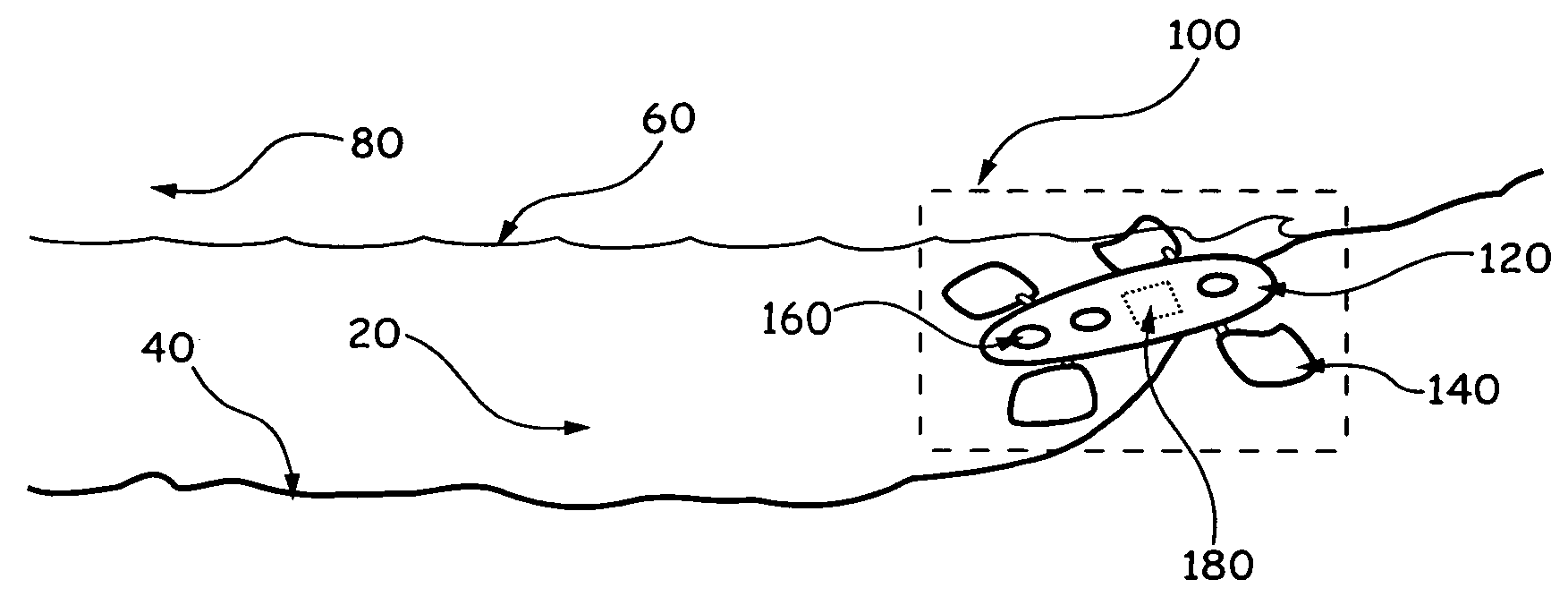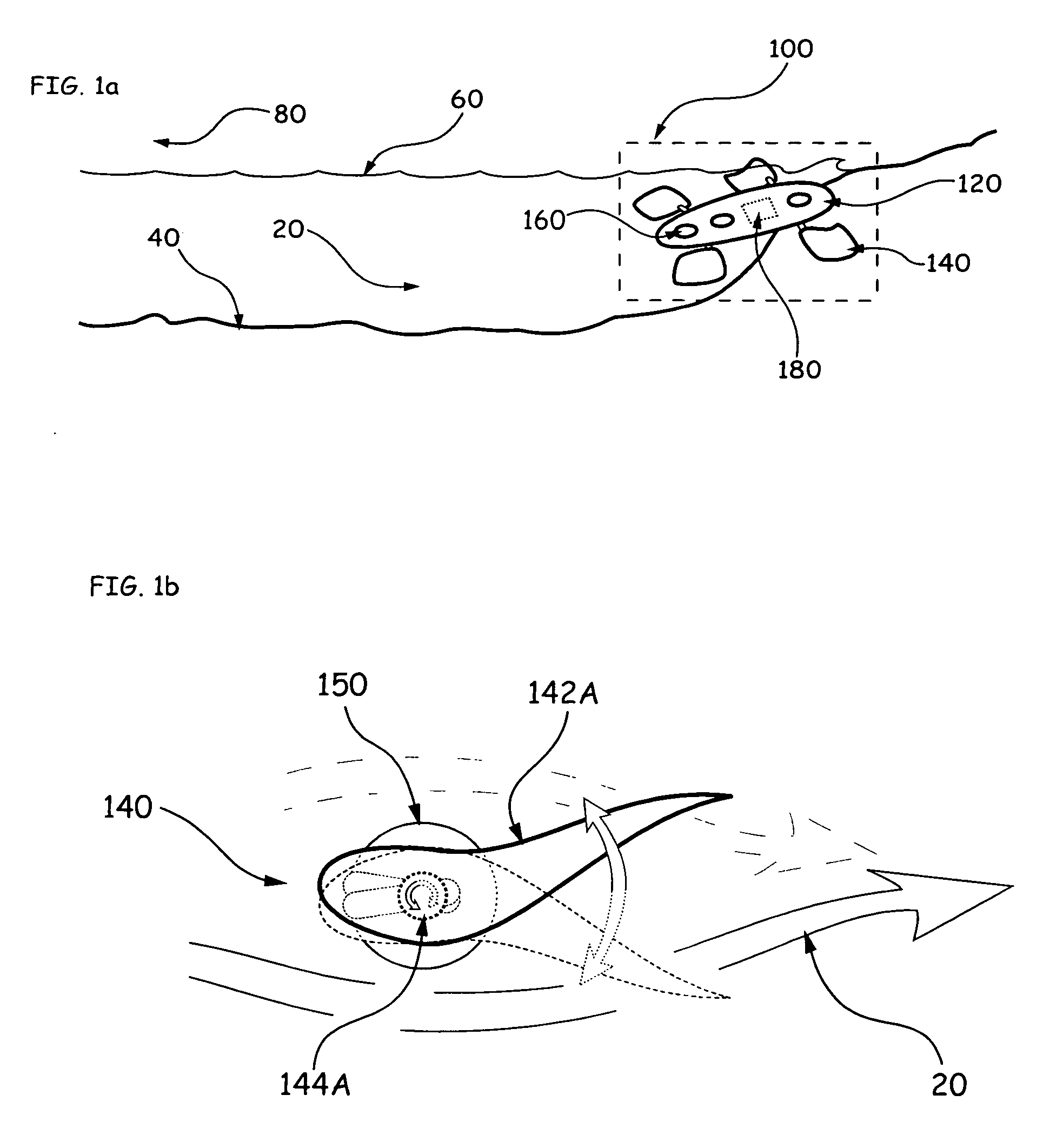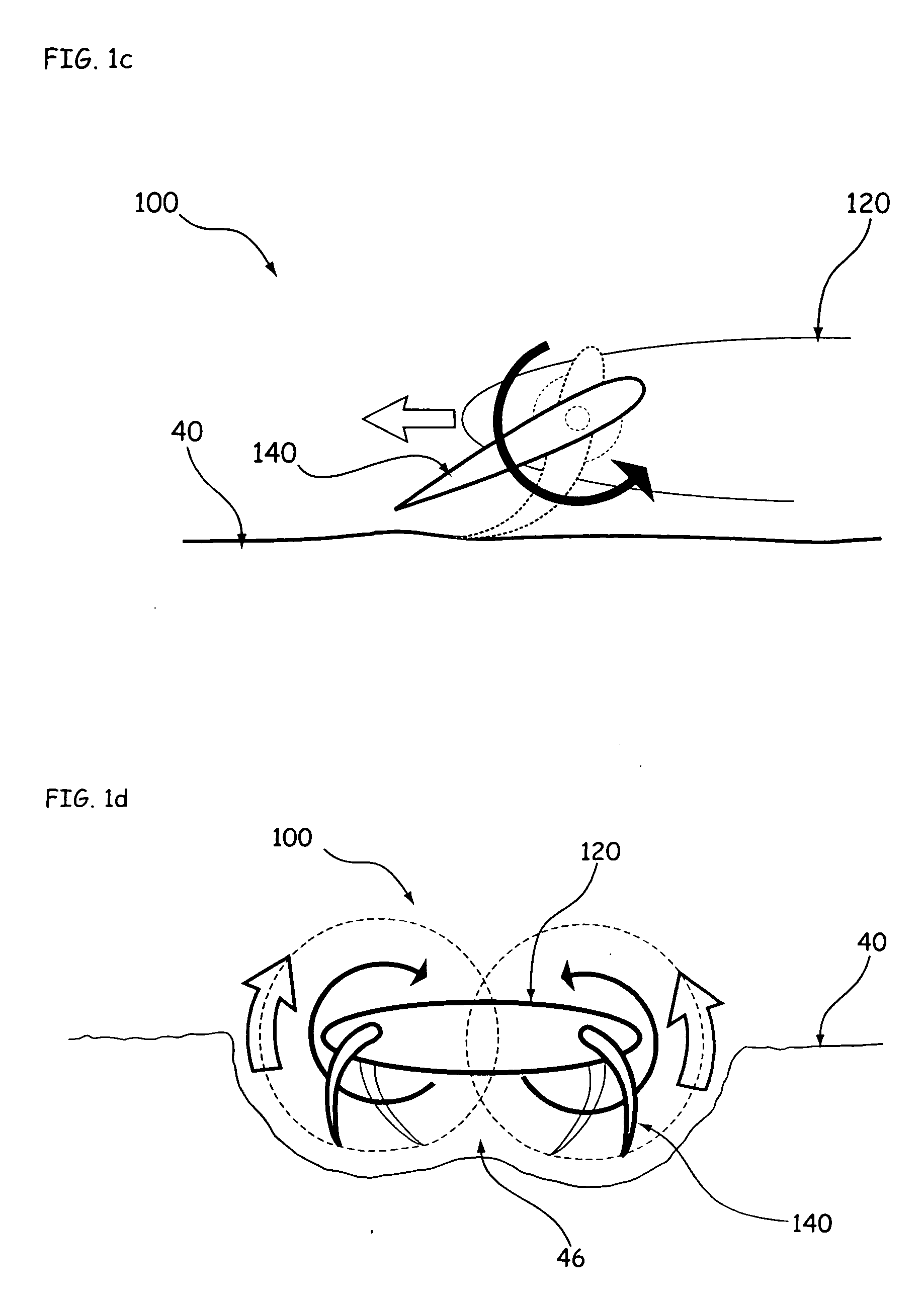Amphibious robot devices and related methods
a robot and amphibious technology, applied in the direction of electric devices, process and machine control, underwater equipment, etc., can solve the problems of personnel being in harm's way, personnel being exposed to situations with the enemy, and information can only be gained at considerable risk to personnel
- Summary
- Abstract
- Description
- Claims
- Application Information
AI Technical Summary
Benefits of technology
Problems solved by technology
Method used
Image
Examples
Embodiment Construction
[0025] The present invention will now be described more fully hereinafter with reference to the accompanying figures, in which embodiments of the invention are shown. This invention may, however, be embodied in many different forms and should not be construed as limited to the embodiments set forth herein. Like numbers refer to like elements throughout. In the figures, layers, components, or features may be exaggerated for clarity.
[0026]FIG. 1a illustrates a device 100 according to embodiments of the present invention that includes a body 120, fins 140, and transducer(s) 160. As shown, the device 100 includes a payload 180 that can be carried within or attached to the body 120, for example, to neutralize another object. The device 100 can swim in the water 20, such as at an intermediate depth, near the substratum 40, and / or at the surface 60. The substratum 40 can be a solid boundary of either air 80 or water 20, such as the sea bottom, sediment, ground, beach, river bank, swamp, o...
PUM
 Login to View More
Login to View More Abstract
Description
Claims
Application Information
 Login to View More
Login to View More - R&D
- Intellectual Property
- Life Sciences
- Materials
- Tech Scout
- Unparalleled Data Quality
- Higher Quality Content
- 60% Fewer Hallucinations
Browse by: Latest US Patents, China's latest patents, Technical Efficacy Thesaurus, Application Domain, Technology Topic, Popular Technical Reports.
© 2025 PatSnap. All rights reserved.Legal|Privacy policy|Modern Slavery Act Transparency Statement|Sitemap|About US| Contact US: help@patsnap.com



